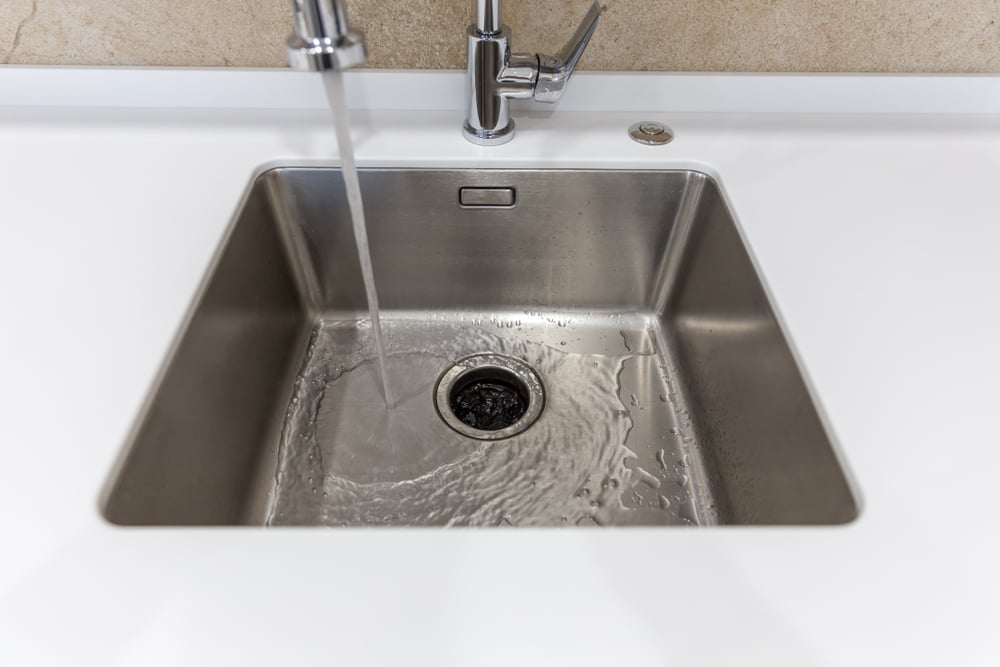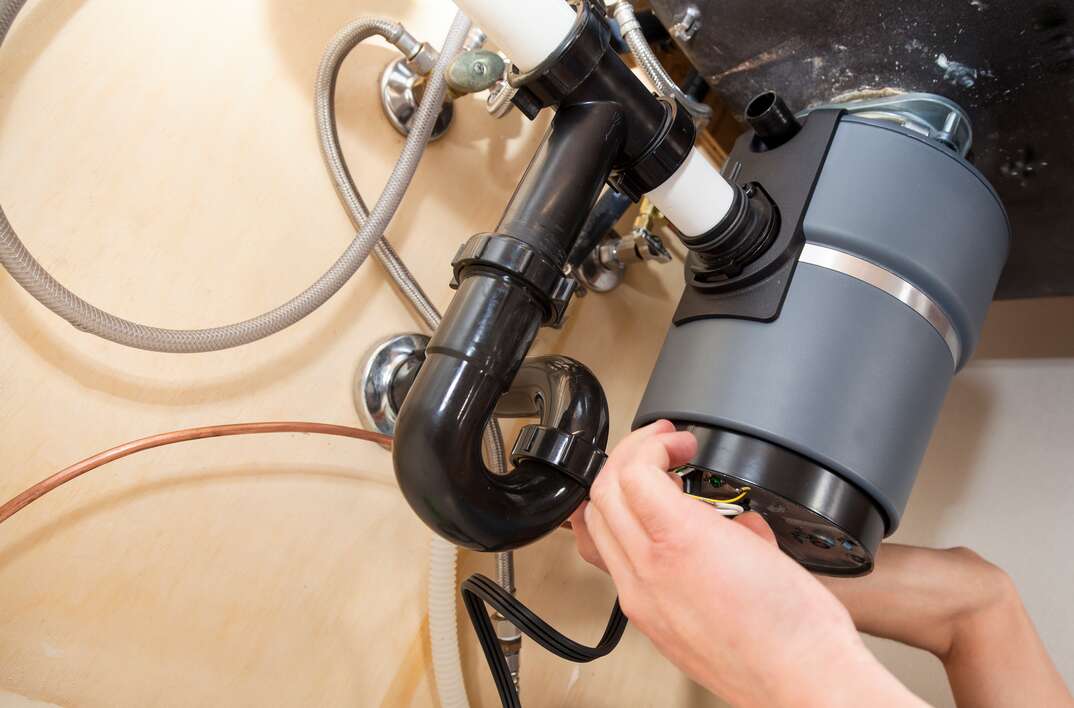Rapid Solutions for Fixing a Dripping Waste Disposal Unit
Rapid Solutions for Fixing a Dripping Waste Disposal Unit
Blog Article
We have come across this post about How to fix a pretty consistent leak from my garbage disposal down the page on the net and thought it made perfect sense to write about it with you on my blog.

Waste disposal unit are important cooking area appliances that aid in getting rid of food waste successfully. Nonetheless, a leaking garbage disposal can be an aggravating and untidy trouble to manage. The good news is, numerous leaks can be dealt with conveniently with a few basic actions. In this write-up, we will go over just how to fix a dripping waste disposal unit efficiently.
Introduction
Waste disposal unit are mounted under cooking area sinks and are made to shred food waste right into smaller pieces, allowing it to travel through the pipes system easily. While these devices are usually dependable, leakages can happen over time as a result of wear and tear, loosened connections, or damages to the unit.
Typical Causes of Leaks in Garbage Disposals
Worn Seals and Gaskets
Seals and gaskets play a critical function in protecting against water from leaking out of the waste disposal unit. Over time, these elements can degrade, causing leakages around the disposal device.
Loose Links
The connections between the garbage disposal and the pipes system can come to be loosened over time, causing water to leak out during operation.
Fractures or Holes in the Disposal System
Physical damage to the garbage disposal, such as fractures or holes in the housing, can likewise lead to leakages.
Recognizing the Resource of the Leakage
Before attempting to repair a leaking garbage disposal, it is essential to recognize the resource of the leak. This can generally be done through aesthetic examination or by carrying out easy examinations.
Visual Evaluation
Check the waste disposal unit system very carefully for any kind of signs of water leakage. Pay attention to locations around seals, gaskets, and connection factors.
Testing for Leakages
One means to examine for leakages is by running water via the disposal device and looking for any type of visible indications of leak.
Tools and Materials Needed for Fixing a Leaking Waste Disposal Unit
Before beginning the repair work process, collect the necessary tools and materials, consisting of a screwdriver, flexible wrench, plumber's putty, replacement seals or gaskets, and epoxy or patching material for fixing fractures or holes.
Step-by-Step Guide to Fixing a Leaking Garbage Disposal
Turn Off the Power
Before attempting any repair work, make certain that the power to the waste disposal unit device is shut off to avoid the danger of electric shock.
Locate the Leakage
Recognize the precise location of the leak and identify the cause.
Tighten Connections
Make use of a wrench to tighten up any loosened links between the disposal device and the plumbing system.
Replace Seals or Gaskets
If the leak results from worn seals or gaskets, get rid of the old elements and replace them with brand-new ones.
Patching Cracks or Openings
For cracks or openings in the disposal unit, usage epoxy or an appropriate patching product to seal the damaged location.
Testing the Garbage Disposal After Repair
When the fixing is complete, evaluate the garbage disposal by running water with it to guarantee that the leak has actually been settled.
Preventive Upkeep Tips to Prevent Future Leaks
To stop future leaks, it is necessary to execute routine upkeep on your waste disposal unit. This consists of keeping it tidy, preventing putting non-food items or hard things down the disposal, and periodically checking for leaks or other concerns.
Conclusion
To conclude, dealing with a leaking garbage disposal is a reasonably straightforward process that can be completed with fundamental devices and materials. By complying with the actions outlined in this short article and practicing preventive upkeep, you can maintain your waste disposal unit in good working condition and prevent expensive fixings in the future.
HERE’S HOW TO FIX YOUR GARBAGE DISPOSAL
WHAT TO DO IF SOMETHING IS STUCK IN YOUR GARBAGE DISPOSAL
If the impeller won’t turn, there’s probably something stuck in the disposal. It could be a steak bone or peach pit, although plumbers report pulling all sorts of inappropriate objects out of disposals, such as bottle caps or aluminum foil. Make sure power to the disposal is off, and look inside to see if you can see the source of the jam.
Never stick your fingers in a disposal. Pull out anything you see with tongs or pliers.
If the disposal still won’t work, it may be time to call a plumber or consider buying a new disposal. GEM Plumbing & Heating is here for all of your garbage disposal needs.
WHAT TO DO IF YOUR GARBAGE DISPOSAL DRAIN IS CLOGGED
Take everything out from underneath your sink and put a bucket or other container under your disposal to catch any water that drains out. Disconnect your disposal from the power supply. If it’s plugged into a wall outlet, unplug it. If it’s hardwired into an electrical box, go to the electrical panel and turn off the breaker for the disposal. Pour ¼ cup of baking soda into the drain, followed by ½ cup of white vinegar. Give the solution a few minutes to fizz and do its work. Look into the disposal with a flashlight to see if you can see an object that might be causing the clog. If you see it, remove it using tongs or pliers. MORE TIPS ON DEALING WITH A CLOGGED GARBAGE DISPOSAL
Never use drain cleaner in a garbage disposal. It can damage the plastic parts inside the disposal. You can also be splashed with the caustic liquid while working to clear the clog. Beware! Never stick your fingers into a garbage disposal. Trust us — not a good idea. In many instances, your dishwasher drains through your garbage disposal. This allows the disposal to grind any large food particles that may be drained out of your dishwasher. There are some jurisdictions, however, where the plumbing code prohibits such a connection. WHAT TO DO WHEN YOUR DISHWASHER DRAINS THROUGH THE DISPOSAL
Run some water in the sink so your plunger has at least a ½-inch of water to create a seal and plunge vigorously up and down several times. You may need to repeat this several times. Run hot water down the drain to clear any residue that remains.

We were introduced to that write-up on Why Is through an associate on another web address. So long as you enjoyed reading our blog post kindly make sure you remember to pass it around. Thanks so much for taking the time to read it.
Additional Resources Report this page